#Photographs 1916
Text
Photographs, 1916
Rachel Doncath, age twenty-five. She stands steadily and faces the camera, but her eyes show a hint of glancing at someone out of the shot. There is a hint of humor about her expression, as if the unseen person were trying to make her laugh. She wears the height of fashion, a dress with a higher waist and a fuller skirt with a hem high enough to expose a pair of delicate shoes that lace up her ankles. Underneath her wide-brimmed hat, her hair is waved. A watch is clipped to her waistband, and she holds her handbag at the ready, as if she hasn't much time to waste in the photographer's studio. A notation on the back of the photograph indicates that it was taken in Otionovia during a state visit from Queen Rietta.
Rietta I of Faysmond, age twenty-six. This is her yearly formal photograph, a portrait of her in state intended for mass production. Unlike most previous years, she sits rather than stands. Her court gown, dripping with various sorts of intricate lace representing different regions of Faysmond, engulfs her, as does an impressive train swept in front of her. The glove of her left hand is removed, revealing her famous emerald engagement ring and wedding ring. The state crown of Faysmond rests on a table beside her, and on her head is a smaller (but not small!) crown. Not a curl is out of place; they seem to have been tamed with some sort of hair product. Her expression is difficult to read. There is something uncertain in her gaze.
Delclis V of Corege, age twenty-five. An unnamed photographer has caught him sitting in the corridor outside a conference room before a meeting. His face is partially turned away toward a large window through which sunlight is streaming. He wears a dress uniform with sash and decorations. His pince-nez rest on his nose. They are attached to a string tied to one of his medals. A wire fox terrier puppy paws at his knee, and he strokes its ears. A faint smile crosses his face. He appears to be desperately trying to grow a moustache.
Elystan, Duke of Gorchester, age twenty-one. He is posing in the full academic dress of a BA from Hollingham University over an elegantly-cut suit. One hand rests nonchalantly on a pile of books on a table, representing his literary studies. The other hand is on his hip, exhibiting the sleeve of his gown. He holds himself regally, shoulders back, chin uplifted a little. His eyes are less dark-circled and his face less hollow than in earlier photographs. He looks very pleased with himself.
Amarantha Melbray, age twenty-one. In a pose reminiscent of a famous self-portrait of her favorite Renaissance artist, Teofila, she sits at her easel lifting a brush to an already-complete painting of a little girl. The painting is identifiable as "Portrait of Chrysantha" (1916), produced during Melbray's time at the Royal Art Academy. Her palette and an orderly paintbox wait nearby. She wears a ruffled light-colored frock that she clearly would never have worn while actually painting. Her hair is pinned high on the back of her head and waves over her ears. She fixes the camera with a steady, intent gaze.
Tamett Låsrygg, age twenty-one. An informal photograph, made clear by the wide grin on his face. He leans casually against the side of an aeroplane. His arms are crossed over his chest. He wears a leather jacket and flying helmet with goggles. A scarf, probably knitted by his sister Emenor, drapes around his neck. Noriberrian insignia is pinned to the lapel of his jacket. The photograph is inscribed with his signature and the words "With love from New Archangel. Watch the skies for me soon!"
Josiah Callon, age twenty-one. He sits at the piano, one hand over the keys, the other holding a pair of spectacles, which he appears to have just removed. His long legs stretch out in front of him; after years of track and field at Hollingham, he is built like a runner. A morning suit, with its cutaway tailcoat, accentuates his height. Instead of the common 1910s male practice of slicking back the hair into flat smoothness using oil, his hair is parted on the side with curls dipping across the forehead above one eye. His expression is not so much haughty as it is profoundly serious and a little sad.
#The Blackberry Bushes#The Blackberry Bushes short stories#(we're just going to call it that)#Photographs 1916#my writing#I can't tell you everyone's fate (partially because even I don't know everything yet) but I can provide glimpses#Rachel Doncath#Rietta Valencourt#Delclis Phemister#Elystan Liddick#Amarantha Melbray#Tamett Lockridge#Josiah Callon
30 notes
·
View notes
Text

Duncan Grant, Christmas 1916
#duncan grant#duncan grant 1910s#1910s#1916#christmas#photographer: roger fry#duncan profile#duncan profile right#duncan age 31#bruce age 31#duncan down#duncan profile down#duncan profile right down
161 notes
·
View notes
Text
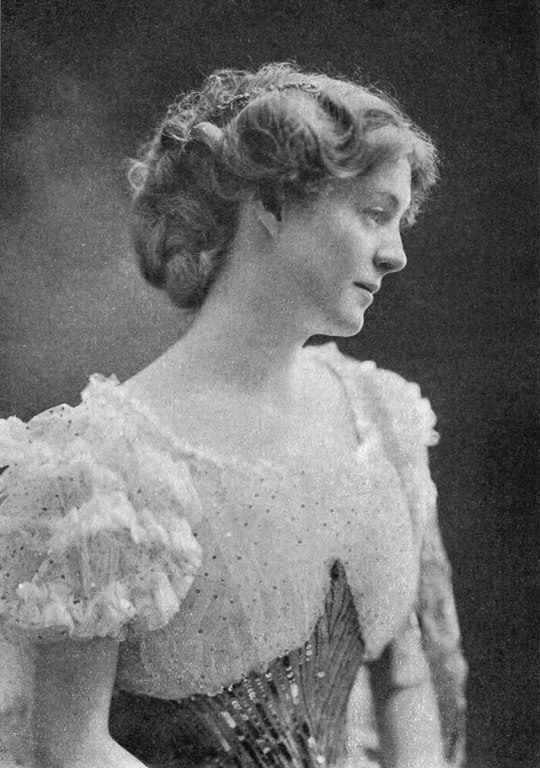

Mabel Taliaferro, American actress (1908, 1916)
via wikimedia.org, wikimedia.org
#mabel taliaferro#old photo#old photograph#vintage photograph#vintage photo#old hollywood#vintage hollywood#silent film#silent film stars#silent film actress#silent movies#silent cinema#edwardian era#edwardiana#edwardian photography#1900s#1910s#early 20th century#1908#1916#e
11 notes
·
View notes
Text

1916: Arthur Clarence Pillsbury on the hood of this Studebaker Six on Glacier Point in Yosemite Park, California. A local carpenter built a trestle so the car could be positioned. :: [Historic Photographs]
* * * *
“Something I heard an archaeologist say in Oslo about deep time returns to me: Time isn’t deep, it is always already all around us. The past ghosts us, lies all about us less as layers, more as drift. […] The problem is not that things become buried deep in strata – but that they endure, outlive us, and come back at us with a force we didn’t realise they had. […] We all carry trace fossils within us – the marks that the dead and the missed leave behind. Handwriting on an envelope; the wear on a wooden step left by footfall; the memory of a familiar gesture by someone gone, repeated so often it has worn its own groove in both air and mind: these are trace fossils too. Sometimes, in fact, all that is left behind by loss is trace – and sometimes empty volume can be easier to hold in the heart than presence itself.”
— Robert Macfarlane, Underland: A Deep Time Journey
[exhaled-spirals]
#Historic Photographs#Studebaker#1916#Precarity#Yosemite Park#Robert Macfarlane#time#deep time#exhaled-spirals#quotes
29 notes
·
View notes
Text

Russian peasant girl (1916/1919)
Photography by unknown Czech legionnaire
21 notes
·
View notes
Photo
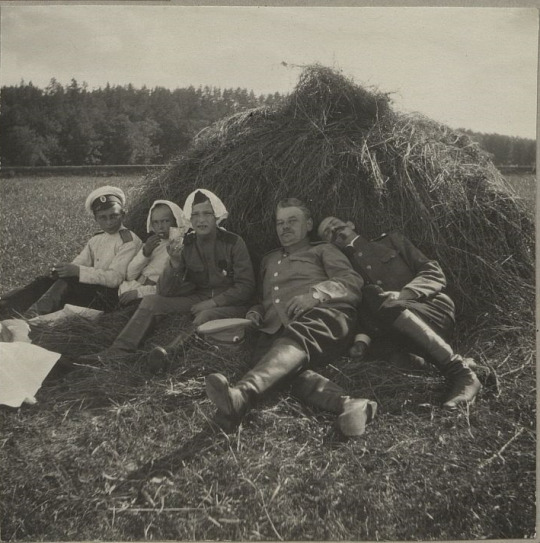

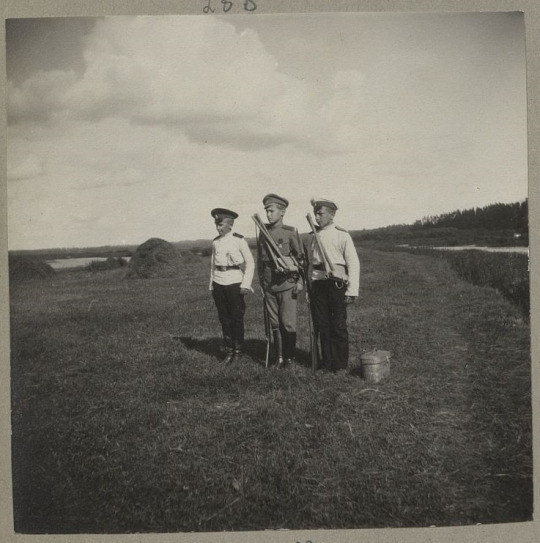

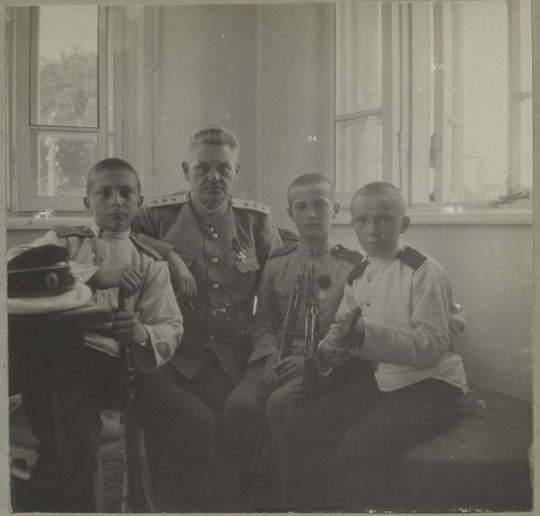
Cadets Evgeni Makarov and Vasili Agaev - Part VII
(Continuation of the 1916-1917 Album of Grand Duchess Anastasia Nikolaevna)
These five photographs come from the Album of Grand Duchess Anastasia Nikolaevna (Circa. 1916-1917). If one peruses through the albums (generously scanned by Ilya Grigoriev), you can see that copies of the same photograph were pasted into various albums belonging to the Grand Duchesses, as well as, Their Majesties.
Cadets Makarov and Agaev (affectionately referred to as “Zhenya” and “Vasya” by the Tsesarevich, and his family), came to Stavka at Mogilev (General Headquarters) in mid-late Summer of 1916. In the Tsesarevich’s diary entries, his times spent at “HQ” were some of the happiest in his life. He felt the most freedom there as opposed to Tsarskoe Selo where he was surrounded always by “fussy women.”
This is the end of photographs of the two boys, in the way of the Imperial Family’s private photograph albums. In other albums and funds (archives) are other photographs. I plan on sharing these too (though they probably have already been posted on here xD) - but I need some shut-eye!
Good night everyone (actually, good morning!), hope you enjoyed this series of posts. ^_^
________________________________________________________________
Photographs:
1. Tsesarevich Alexei Nikolaevich with Cadets Evgeni Makarov (left) and Vasili Agaev (far left), as well as, Petr Petrov (right) and Pierre Gilliard (far right).
2. Tsar Nicholas II (far right) with Cadets Evgeni Makarov (standing, left) and Vasili Agaev (sitting, infront of Cadet Evgeni Makarov), as well as, Tsesarevich Alexei Nikolaevich (center, next to Cadet Vasili Agaev).
3. Tsesarevich Alexei Nikolaevich with Cadets Evgeni Makarov (left) and Vasili Agaev (right).
4. Cadets Evgeni Makarov (right) and Vasili Agaev (left), as well as, Petr Petrov (next to Cadet Vasili Agaev) and Boatswain Andrei Derevenko (next to Cadet Evgeni Makarov).
5. Tsesarevich Alexei Nikolaevich with Cadets Vasili Agaev (left) and Evgeni Makarov (right), as well as, Petr Petrov (center, between Cadet Vasili Agaev and Tsesarevich Alexei Nikolaevich).
________________________________________________________________
Sources:
Альбом Анастасии Николаевны, 1916-1917 гг.
Link of courtesy:
https://www.flickr.com/photos/149552988@N02/albums/72157703990478911
#evgeni makarov#vasili agaev#simbirsk cadet corps#orlovsky-bakhtin cadet corps#tsesarevich alexei#alexei nikolaevich#imperial russia#photographs#1916#1917#russian archival material#ilya grigoriev#russian state archives#great wave#first world war#tribute post#romanov
62 notes
·
View notes
Text

Soninke woman from Mali
French vintage postcard, photographed by Fortier, mailed in 1916
#historic#briefkaart#woman#postkaart#carte postale#ephemera#photographed#tarjeta#photo#postcard#postal#mailed#mali#postkarte#ansichtskarte#french#soninke#1916#sepia#photography#vintage#fortier
6 notes
·
View notes
Text
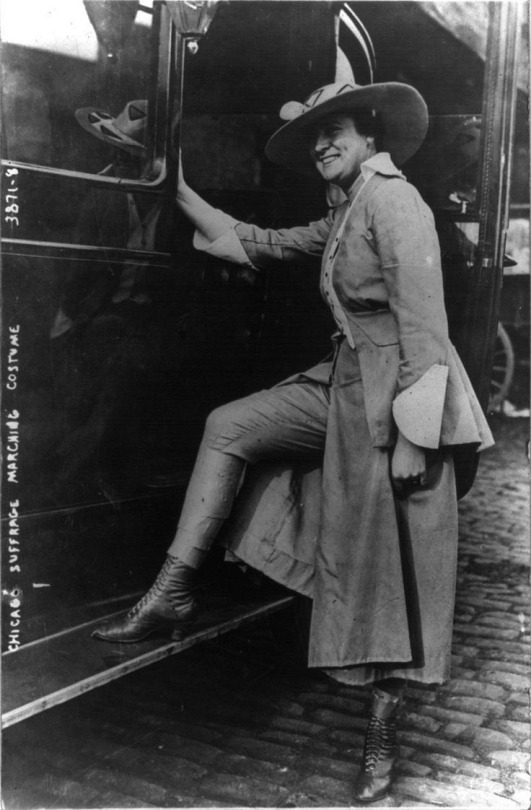
#Got told I should post this here… Photograph taken in 1916 of a Chicago suffragist getting in a car#showing her marching outfit consisting of high heeled boots#pants under an open-front skirt#short jacket#and broad brimmed hat.#Mx_Dee#oldschool
16 notes
·
View notes
Text
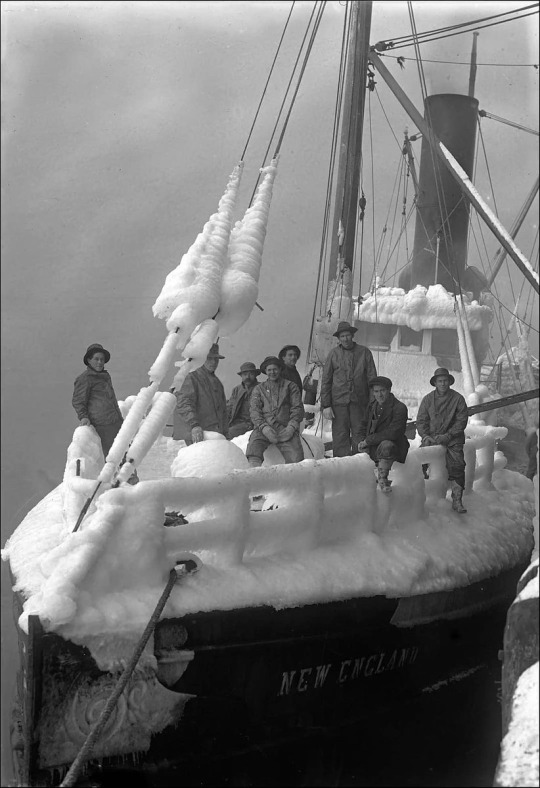
Halibut fishing boat 'New England' covered in ice, 1916.
Photographer: Leonard Frank
---------------------------------------------------------
Leonard Juda Frank
b. 3 July, 1870, Berne, Germany
d. 23 February, 1944, Vancouver, Canada
Son of one of Germany's earliest professional photographers, Leonard Frank was born in Berne, Germany in 1870. In 1892 he was struck with gold fever and emigrated to San Francisco, moving to Alberni on Vancouver Island two years later intending to prospect for gold. Frank never discovered gold, but by chance won a raffle prize of a camera which sparked his lifelong passion. While managing a general store and continuing to prospect, Frank took pictures of the surrounding country until photography became his chosen profession.
In 1917, Frank moved to Vancouver and quickly became the leading commercial / industrial photographer in the city. Frank 's photographs form a unique document of Vancouver and British Columbia's history between the wars. Whether in woods, shooting the activities of the lumber industry, or on Vancouver's waterfront, recording the contents of warehouses, Frank invariably managed to produce photographs which not only included the required factual information, but also the most exquisite natural light effects. He was frequently commissioned to photograph for both the provincial and federal governments, as well as being the official photographer for the Vancouver Board of Trade. Frank was an associate member of the Royal Photographic Society of Great Britain, the first in Vancouver to receive the coveted award.
Vancouver Public Library
Credit: VPL 16203
#Past Times#Ancestors Alive#What is Remembered Lives#Halibut Fishing Boat#New England#ice#1916#vintage photography#Vancouver Public Library#Leonard Frank#Leonard Juda Frank#photographer#Fishing#boat
10 notes
·
View notes
Text
Notable transgender people from history
Here's the list I put together for when people on non-trans subreddits claim we didn't exist until recently:
Ashurbanipal (669-631BCE) - King of the Neo-Assryian empire, who according to Diodorus Siculus is reported to have dressed, behaved, and socialized as a woman.
Elagabalus (204-222) - Roman Emperor who preferred to be called a lady and not a lord, presented as a woman, called herself her lover's queen and wife, and offered vast sums of money to any doctor able to make her anatomically female.
Kalonymus ben Kalonymus (1286-1328) - French Jewish philosopher who wrote poetry about longing to be a woman.
Eleanor Rykener (14th century) - trans woman in London who was questioned under charges of sex work
[Thomas(ine) Hall](https://en.wikipedia.org/wiki/Thomas(ine)_Hall) - (1603-unknown) - English servant in colonial Virginia who alternated between presenting as a woman and presenting as a man, before a court ruled that they were both a man and a woman simultaneously, and were required to wear both men's and women's clothing simultaneously.
Chevalier d'Eon (1728-1810) - French diplomat, spy, freemason, and soldier who fought in the Seven Years' War, who transitioned at the age of 49 and lived the remaining 33 years of her life as a woman.
Public Universal Friend (1752-1819) - Quaker religious leader in revolutionary era America who identified and lived as androgynous and genderless.
Surgeon James Barry (1789-1865) - Trans man and military surgeon in the British army.
Berel - a Jewish trans man who transitioned in a shtetel in Ukraine in the 1800's, and whose story was shared with the Jewish Daily Forward in a 1930 letter to the editor by Yeshaye Kotofsky, a Jewish immigrant in Brooklyn who knew Berel
Mary Jones (1803-unknown) - trans woman in New York whose 1836 trial for stealing a man's wallet received much public attention
Albert Cashier (1843-1915) - Trans man who served in the US Civil War.
Harry Allen (1882-1922) - Trans man who was the subject of sensationalistic newspaper coverage for his string of petty crimes.
Lucy Hicks Anderson (1886–1954) - socialite, chef and hostess in Oxnard California, whose family and doctors supported her transition at a young age.
Lili Elbe (1882-1931) - Trans woman who underwent surgery in 1930 with Dr. Magnus Hirschfeld, who ran one of the first dedicated medical facilities for trans patients.
Karl M. Baer (1885-1956) - Trans man who underwent reconstructive surgery (the details of which are not known) in 1906, and was legally recognized as male in Germany in 1907.
Dr. Alan Hart (1890-1962) - Groundbreaking radiologist who pioneered the use of x-ray photography in tuberculosis detection, and in 1917 he became one of the first trans men to undergo hysterectomy and gonadectomy in the US.
[Louise Lawrence](https://en.wikipedia.org/wiki/Louise_Lawrence_(activist)) (1912–1976) - trans activist, artist, writer and lecturer, who transitioned in the early 1940's. She struck up a correspondence with the groundbreaking sexologist Dr. Alfred Kinsey as he worked to understand sex and gender in a more expansive way. She wrote up life histories of her acquaintances for Kinsey, encouraged peers to do interviews with him, and sent him a collection of newspaper clippings, photographs, personal correspondences, etc.
Dr. Michael Dillon (1915-1962) - British physician who updated his birth certificate to Male in the early 1940's, and in 1946 became the first trans man to undergo phalloplasty.
Reed Erickson (1917-1992) - trans man whose philanthropic work contributed millions of dollars to the early LGBTQ rights movement
Willmer "Little Ax" Broadnax (1916-1992) - early 20th century gospel quartet singer.
Peter Alexander (unknown, interview 1937) - trans man from New Zealand, discusses his transition in this interview from 1937
Christine Jorgensen (1926-1989) - The first widely known trans woman in the US in 1952, after her surgery attracted media attention.
Miss Major Griffin-Gracy (1940-present) - Feminist, trans rights and gay rights activist who came out and started transition in the late 1950's. She was at Stonewall, was injured and taken into custody, and had her jaw broken by police while in custody. She was the first Executive Director of the Transgender Gender Variant Intersex Justice Project, which works to end human rights abuses against trans/intersex/GNC people in the prison system.
Sylvia Rivera (1951-2002) - Gay liberation and trans rights pioneer and community worker in NYC; co-founded STAR, a group dedicated to helping homeless young drag queens, gay youth, and trans women
Marsha P. Johnson (1945-1992) - Gay liberation and trans rights pioneer; co-founded STAR with Sylvia Rivera
#lgbtqia#lgbtq community#lgbtq#lgbt pride#queer#transfem#trans#transgender#trans pride#transmasc#transblr#gender#nonbinary lesbian#gender coining#mogai gender#trans stuff#queerness#queer stuff#gender stuff#genderqueer#gender noncomformity#genderfluid#gender critical#terfsafe#terfism#terfblr#radical feminism#sapphic#terfenadine#gender ideology
349 notes
·
View notes
Text

(TW injury description)
I am SO glad you asked I lose my mind over this man. Sidney Beldam! He’s most known for his miraculous recovery from a major facial injury sustained while he served as a young sergeant in the First World War. If you’ve read the Facemaker by Lindsay Fitzharris you might recognise him! Sources differ slightly about his story, so I’ve pieced it together as best I could. The photos below were from about February 1919!
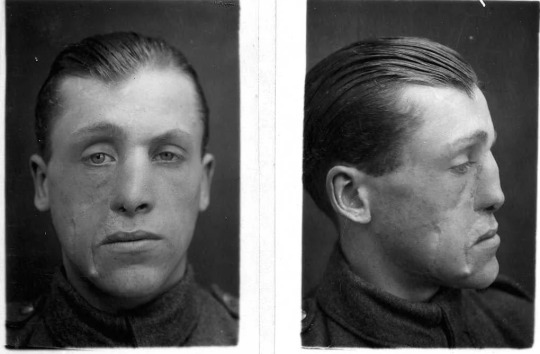
Born in 1897, Sidney was about 17 living with his mother in Cambridge, England when the Great War commenced. While he didn’t enlist initially, he was soon conscripted when it came about in 1916 though thankfully he was in a non-combatant role driving lorries transporting soldiers to boats headed for France. It’s where he learned he enjoyed driving! However in April 1917, Sidney was transferred to the Machine Gun Corps and eventually rose to the rank of sergeant where only 7 months later, his life would change forever.
During the battle of Passchendaele, one of the muddiest most gruelling segments of the war, Sidney was on the frontlines when a shell burst, sending a shrapnel fragment tearing diagonally through his nose and the right side of his face. The young soldier collapsed face first into the mud which ended up saving his life as falling backwards would have caused him to choke on his own blood. For three days Sidney laid in a mangled heap floating in and out of consciousness while vermin scurried about his body and the other dead and wounded around him. No one would ever know the details of those agonising three days, but the trauma he experienced there left him with a lifelong phobia of rats and cockroaches. After the initial wounded had been cleared out, a wandering band of stretcher bearers discovered Sidney alive after one man touched him with his boot fully expecting him to be dead. Miraculously, he was still clinging to life.
The 19 year old sergeant was rushed down the line and then transferred to two different military hospitals where his wounds were hastily stitched in an effort to save his life before infection could spread. Unfortunately, closing the gap where he was missing flesh in his cheek caused his upper lip to be pulled into a sneer and a sunken depression formed where most of his nose was missing around the bridge. Still, he was lucky to be alive, which he later used to remark. Well he was luckier still as he would be transferred to Sidcup military hospital in Kent where he would become a patient under Sir Harold Gillies, the man often considered the pioneer of modern plastic surgery. When he arrived at hospital in 1918, his wounds were healed but his face still bore the heavy trauma of his experience. If you want to see his photographs upon arrival, I won’t post them here but if you search his name, the photos are everywhere. IMO they’re not graphic but I know it can upset some people.
Gillies went to work trying to restore Sidney’s face. This required him to reopen the wound in his cheek where a skin flap was grafted to allow his upper lip to return to normal. He also folded down a skin flap from his forehead in order to create a new nose. Behind his facade, a series of tubes and canals had to be inserted for proper sinus drainage and other unnamed functions. While his initial handful of surgeries did most of the work to reconstruct his face, Sidney underwent over 40 surgeries between 1918 and the 1930s, some reconstructive and some to evacuate the tubes behind the flesh, meaning the common cold was a routinely painful affliction for him. Gillies understood operations were traumatic for the men at Sidcup, especially since most required more than one, and so made a point about creating a lighthearted ward environment, one Sidney says was quite jolly with the staff doing everything they could to make them feel comfortable and dignified as possible. And while I thought the topmost photos were the most updated case study photos for his recovery, I stumbled upon another set from 1920 in the Faces of War by Andrew Bamji I have not seen posted anywhere!
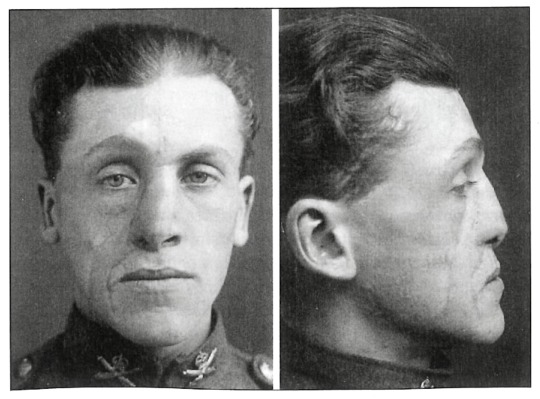
And lads listen. In such a sweet little twist, while Sidney was still recovering from the bulk of his major surgeries, a local pianist by the name of Winifred volunteered to play for the resting servicemen, all of whom had some form of disfigurment or amputation. Carrying in her sheet music, she and Sidney laid eyes on each other for the first time and she later remarked how his smile instantly lit up the whole room! For them, it was love at first sight. The two were soon married, and although it was in the 1920s, I don’t have an exact year for this. This most likely came after Sidney was finally discharged from service in 1921. There is a photo of their wedding and y’all look how SWEET!!
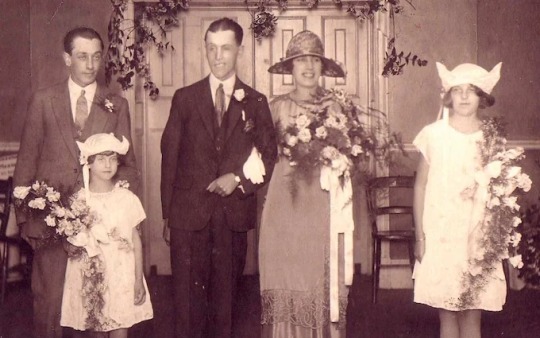
Between his initial surgeries and army discharge, Gillies asked if Sidney would be his personal chauffeur, an offer he took up quickly as he loved driving from his time with lorries during the war. One somewhat humorous account tells of Gillies—who was a bit scattered at times—asking Sidney to renew his driver’s license as the surgeon left it until the last day to take care of; Sidney in a rush waited in a long line at the county hall before jumping the queue and begging the administrator to expedite his employer’s license as it was needed to drive him to the hospital the next day. The man refused, even for a surgeon to get him to his patients. Sidney went to another staff member who was friends with Gillies and begged him the same. The man cheerily agreed but was still in need of a signature from the stubborn administrator who again refused... at least until he found out Harold Gillies nearly won a golfing championship, at which point he took Sidney to his personal office to expedite the license as he was happy to do business for a skilled golfer (apparently saving people’s lives doesn’t matter as much??). A no doubt perplexed Sidney was finally able to get back to the hospital on time!
After his army discharge and most likely about the time of his marriage, Sidney moved back to Cambridge where he worked for the council as a rent collector. He was so well liked, apparently even from the people he collected from, that he soon worked his way to Housing Manager for Cambridge. About this time, he had a daughter, Pam. Every account I read of him, people gush about how sweet he was. His wife recalls how Sidney was always adored by all his family and friends. His granddaughter Marilyn McInnes in an interview said, “He was the most warm and optimistic and loving man. I adored my grandfather, I was constantly on his lap as a small child. I never noticed anything funny about his face, I guess I thought all grandads looked like mine.”
Sadly, Sidney Beldam passed away from cancer at about 80 years old in 1978. But considering the man was given 6 months to live and ended up living for 60 years more surrounded by a large and loving family, I’d say he certainly had a full life. There is a picture of him and his wife in the 60s and they are absolutely charming!!

But anyway that’s me done rambling I’ve a massive crush on him. His story makes me genuinely happy to tell and I’m so glad you asked!
#I love love love this man sm he’s just described as this ray of sunshine!!#I want to put him in my pocket#And the story of him and his wife like actually kill me that is so cute#I’m so happy he was able to live a full life#Also yeah lads he is so fine ngl when I saw him in that book I was like WOW#he has such gorgeous eyes and I love his nose#and his smile#wwi#world war 1#sidney beldam#history#wwi medicine#injury tw#medical tw#long post
485 notes
·
View notes
Text

1916 c. Brother and sister photographed in Charlottesville, Virginia. From America in the 1910's, FB.
459 notes
·
View notes
Text
thinking about edwin’s death in regards to, like, public history.
i like to think of edwin’s death being labelled “an act of god” to be because it looks like him and the other boys were essentially raptured. we know simon died and went to hell at the same time edwin died, so we can assume that the demon also killed the other boys as well. in hell edwin and simon are only wearing their underclothes—yet in the scene in 1x01 they’re wearing their night dresses, so what if those were the only things left behind? no bodies, just the nightshirts. raptured! an act of god!
so, six boys disappear and supposedly die on a random night in 1916, it’s eventually labelled an act of god—i wonder by who? the police? the school administration?—regardless, it becomes a sort of local unsolved mystery and goes through waves of interest by local scholars over the years. i’m talking local historians and archivists having an interest and collecting material surrounding all the “missing” boys, conspiracy theories that none of them actually died and staged the rapture to start a new life, for whatever reason, maybe even “theories” that “ritualistic sacrifice” was involved, wouldn’t that be crazy?
st. hilarions becomes like a hotbed for ghost hunters, etc. to come and see if they can contact the boys because there’s rumours the grounds are haunted now—including the river close to the edge of the grounds? people whisper about another boy who died in the 1980s there? a rumoured cover up of something—i’m talking fucking podcasts and reddit posts about this shit. and what if some material—letters, photographs, maybe even the nightshirts in question—belonging to edwin, simon and the other boys ending up in a local archives, maybe even the school archives?
what if edwin’s death was never “solved” in any official sense, but what if the public had an interest in what happened to him? i wonder what he would think about that. would edwin consider his life forgotten then?
#dead boy detectives#dbda#dbdshow#edwin payne#i might actually work this into a fic at some point#dead boy thoughts
275 notes
·
View notes
Text
Another brand new photograph has been discovered




The photo shows Alexandra Feodorovna, Tatiana Nikolaevna, Anastasia Nikolaevna, and officers. Tatiana is sunbathing, a particular favourite pastime of the girls.
No information on the album it is from yet, but it looks like it was taken in Mogilev, likely 1916, in my view.
As always, it was discovered by the wonderful Ilia, lastromanovs on flickr. Спасибо, Илия!
109 notes
·
View notes
Text

Torreon at Manzano, New Mexico
Photographer: Jesse Nusbaum
Date: 1916
Negative Number: 013862
224 notes
·
View notes
